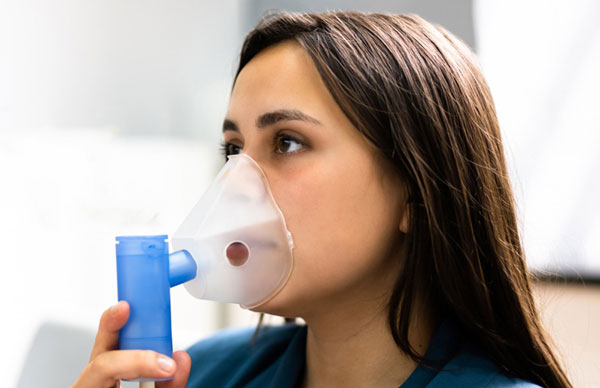World Hepatitis Day 2025: Time to Act on Hepatitis

Introduction
Every year, 28th July is observed as World Hepatitis Day. It serves as a powerful reminder of the impact of viral hepatitis, a group of infectious diseases that affect the liver and can lead to both acute and chronic conditions.
The World Hepatitis Day 2025 theme is, "let’s Break It Down,” this theme underscores the urgent need to dismantle the financial, social, and systemic barriers, including stigma that prevent access to testing, vaccination, and treatment.
Someone dies of hepatitis-related diseases every 30 seconds. Such a harsh reality necessitates awareness, education, and action both for individuals and communities.
What is Hepatitis?
Hepatitis refers to inflammation of the liver, an essential organ that cleanses the body, makes proteins, and facilitates digestion. Although hepatitis may be caused by viruses, alcohol, autoimmune disorders, and specific drugs, viral hepatitis is responsible for most of the cases worldwide.
There are five main forms of viral hepatitis:
- Hepatitis A (HAV)
- Hepatitis B (HBV)
- Hepatitis C (HCV)
- Hepatitis D (HDV)
- Hepatitis E (HEV)
Each variant varies in transmission, severity, and prognosis, but all can cause severe liver damage if untreated.
Why is Hepatitis considered a Global Burden and a Silent crisis?
According to the World Health Organization’s Global Hepatitis Report:
- Approximately 1.3 million people die each year from chronic hepatitis B and C (equivalent to 3,500 deaths per day).
- About 254 million people live with chronic hepatitis B, and 50 million with chronic hepatitis C.
- Only around 13% of HBV and 36% of HCV infections are diagnosed, and treatment coverage remains low.
Despite being preventable and treatable, hepatitis continues to claim lives silently, primarily due to barriers like limited access to healthcare, cost of diagnostics, and social stigma. World Hepatitis Day 2025 urges us to break these barriers down and build a fairer health system for all.
Types of Hepatitis and Their Modes of Transmission
1. Hepatitis A (HAV)
- Spread by contaminated food or water.
- Prevailed in unsanitary conditions.
- Preventable by vaccination.
- Generally acute and does not cause long-term damage.
2. Hepatitis B (HBV)
- Transmitted via blood, unprotected sex, and from mother to child during birth.
- Can result in chronic infection, liver cirrhosis, or liver cancer.
- Vaccine-preventable and treatable with antiviral drugs.
3. Hepatitis C (HCV)
- Mainly transmitted via blood (e.g., non-sterile injections, blood transfusions).
- No vaccine available yet, but very curable with antiviral medication.
- Frequently asymptomatic in the initial stages.
4. Hepatitis D (HDV)
- Only occurs in people already infected with hepatitis B.
- Becomes more severe HBV infection.
- Preventable by vaccination against hepatitis B.
5. Hepatitis E (HEV)
- Transmitted through infected water.
- Acute infection, more dangerous in pregnant women.
- Preventable by improved sanitation and safe drinking water.
Symptoms You Should Pay Attention To
Symptoms of hepatitis may be mild or absent in the initial stages and hence diagnosis may be challenging without testing. Common signs, however, are:
- Fatigue and weakness
- Jaundice (yellowing of the skin and eyes)
- Loss of appetite
- Abdominal pain (especially upper right quadrant)
- Dark-colored urine
- Pale or clay-colored stool
- Nausea and vomiting
- Joint pain
- Fever
If these symptoms are persistent, particularly in association, prompt medical consultation is important.
The Importance of Early Diagnosis
Early diagnosis of hepatitis can help prevent liver damage and stop the spread of infection. Chronic hepatitis B and C often go undetected for years, silently damaging the liver without showing any obvious symptoms. That's why routine screening and regular blood tests are strongly recommended, especially for:
- Pregnant women
- Healthcare workers
- Those with a history of blood transfusions or IV drug use
- Those with tattoos or piercings obtained in unsupervised environments
- Those born in areas of endemic HBV/HCV
Early diagnosis enables patients to start proper treatment and decreases the chance of transmitting the infection.
Preventions You Should Know
Prevention of hepatitis involves a mix of personal hygiene, vaccination, safe practices, and public awareness.
1. Vaccination
- Hepatitis A and B vaccines are safe and highly effective.
- HBV vaccines must be given to children from birth.
- Adults with high-risk groups should also be given the vaccines.
2. Safe Food and Water
- Wash hands before cooking or eating.
- Use safe, clean water to drink.
- Do not eat raw or undercooked shellfish in high HAV/HEV prevalence areas.
3. Safe Sexual Activities and Needle Practices
- Always use protection during sex.
- Don't share needles or razors.
- Screen blood products before transfusion.
4. Maternal Screening
- Pregnant women should be screened for hepatitis B to prevent transmission to newborns.
Treatment Options
The Treatment depends on the type and stage of hepatitis:
Hepatitis A and E
- No specific antiviral treatment; supportive care is usually sufficient.
- Most people recover completely within a few weeks or months.
Hepatitis B
- Chronic cases may require long-term antiviral medications to suppress the virus.
- Regular monitoring of liver function is essential.
Hepatitis C
- There are highly effective direct-acting antivirals (DAAs) that can cure more than 95% of chronic infections.
- Early detection greatly enhances treatment success.
Hepatitis D
- More difficult to treat and may require interferon treatment.
- Prevented by vaccinating against hepatitis B.
Some Myths and Misconceptions About Hepatitis
Misinformation is a barrier to diagnosis and treatment. Here are some myths and facts that counter them:
Myth: Hepatitis infects only drug users.
Fact: Hepatitis can affect anyone through unsafe food, water, or unprotected sex.
Myth: A healthy lifestyle prevents hepatitis.
Fact: Even though useful, immunization and safe sex are necessary.
Myth: Hepatitis cannot be cured.
Fact: Hepatitis C is curable and hepatitis B can be well-treated.
Myth: You can contract hepatitis through casual contact.
Fact: Hepatitis is not transmitted by hugging, kissing, or sharing food (except in unusual situations involving poor hygiene for hepatitis A).
Steps You Can Take To Stay Safe From Hepatitis
- Get Tested: If you belong to a high-risk group or experience unexplained symptoms, immediately consult a doctor.
- Get Vaccinated: Keep yourself and your loved ones safe by staying caught up on hepatitis A and B vaccines.
- Practice Safe Habits: Use clean water, have safe sex, and refrain from sharing personal hygiene items.
- Stay Informed: Share facts and get others informed about hepatitis.
Conclusion
World Hepatitis Day 2025, with the theme “Let’s Break It Down,” calls on all of us to take action by dismantling the barriers of stigma, misinformation, and limited access that still prevent millions from receiving timely testing, vaccination, and treatment. Hepatitis is preventable, treatable, and in many cases, curable yet it continues to claim lives needlessly. The time to act is now. By raising awareness, promoting early diagnosis, and advocating for inclusive healthcare, we can move closer to a world free from hepatitis.
Disclaimer
Though all attempts are made to provide correct information on the subject, inadvertent & typographical errors arising out of manual intervention cannot be ruled out. It is requested to bring any such discrepancies to the notice of the blogger for correction.













